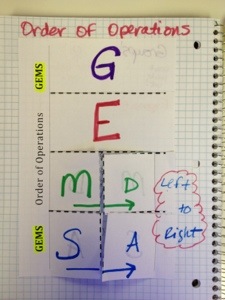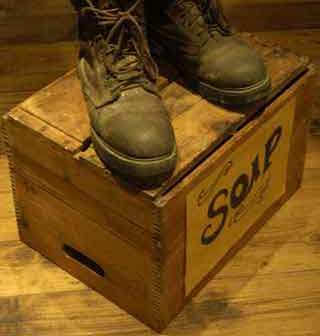It's another Made 4 Math Monday!
For this week, I played with file folders and duct tape to make a hanging pocket folder. This was inspired by
this Monday Made It post. I originally started with regular file folders and then had issues with how far to spread them out and measurements and other OCD-it-won't-be-perfect issues. My intended use for the hanging file was for half sheet forms that we access daily and I just couldn't get the spread to work and look aesthetically pleasing. Instead of scrapping the idea, I decided instead to use the
slash pocket file folder separators that we use in the kids' three-ring binders at school because we have bunches and then I used the holes to help align how far they were separated.
I used 3 slash pocket folders. I aligned the holes and then carefully flipped them over and used clear packing tape to tape them together.
I measured the diagonals.
Then I cut lengths of duct tape the size of the diagonal. After, I cut the tape down the center to make two thinner strips.
I made marks a centimeter to the side of the pocket opening and then drew a line connecting the marks.
I lined the duct tape up along the line and then folded it over and tucked it behind the pocket opening.
I then covered the top, bottom, left, and right with the duct tape. I measured an inch around, drew lines and used it to line up the duct tape before pressing and folding it behind. I'm thinking that I will hang this one horizontally.
I made another intending to use it for full length sheets, but was not as excited about how the full length sheets fit. (Left and right side were only taped with 1/4 inch duct tape exposed to accommodate the width of a full sheet of paper) I was also not too excited about the way it looked with multiple colors. I tried to fix that by add the additional duct tape stripes, but it wasn't doing it for me.
So I repeated the process, but spread the folders out more. This time I aligned the top of one folder to the bottom of the folder opening. I liked the result much better. (The folder color choice was made to coordinate to the three forms we use.)
I'm not sure how I'm going to hang them, as I don't know what I'm teaching or what rooms I'll be in yet. So who knows if they'll be going up on cinder block or bulletin board? I think I may punch holes and use Command Hangers. I'll post pictures when they finally find a home.
I also made pretty pens like
@druinok did for the first Made 4 Math Monday. I followed these
directions along with druinok's measurements of .75" by 3.5". Like
@misscalcul8 I am matchy-matchy and had to use paper that coordinated with the pen color. I LOVE THESE. What's awesome is that these pens will easily be identified as MINE!

I've got a couple other projects in the works, but they aren't complete enough to share yet. I downloaded a trial copy of
Bento and have been working on some digital goodness to keep me organized this coming year. I've also been plotting some desk drawer organization, too. I guess they'll have to wait until next Monday!







































.JPG)

